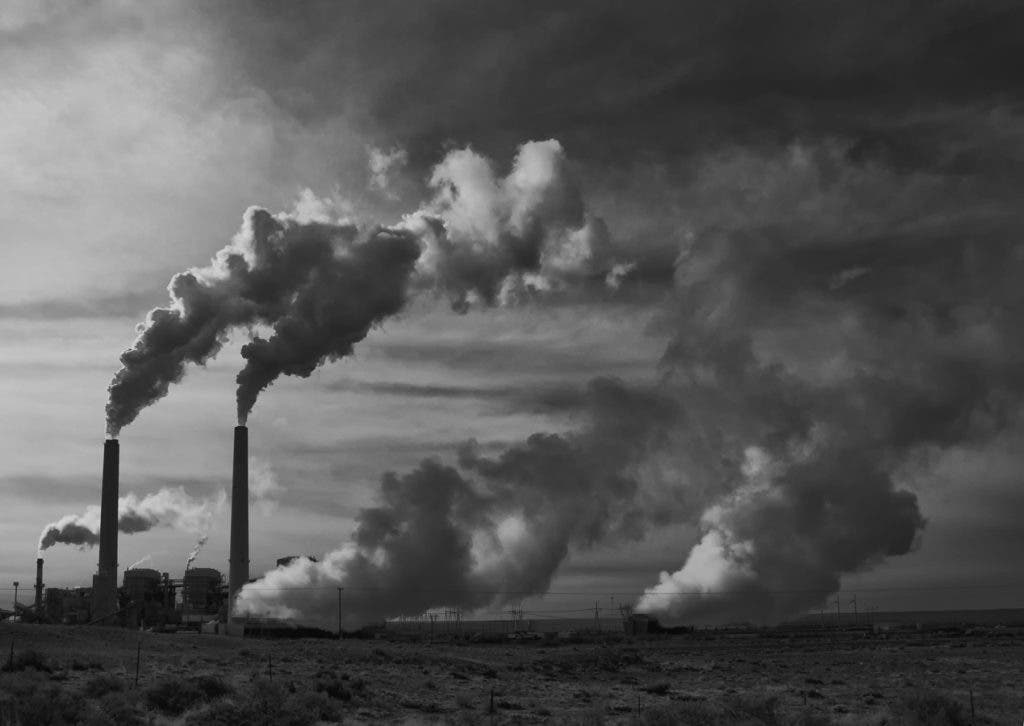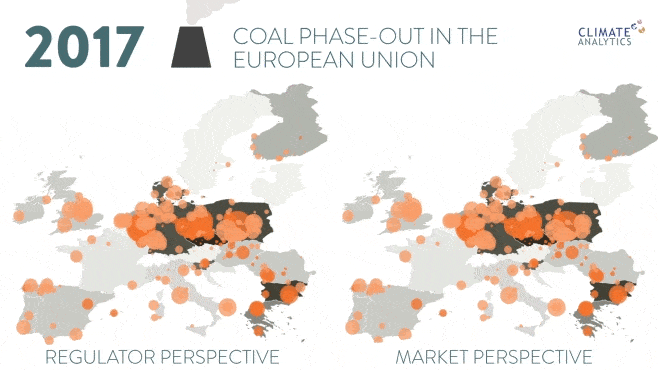
If we’re to limit global warming to 1.5 degrees Celsius per the Paris Agreement, a massive paradigm shift in how we source our energy has to take place. By some accounts, the world is already one degree Celsius warmer than in the pre-Industrial Age so the shift from fossil fuels to renewable energy has to be made much faster. In Europe, a new study has identified phasing out coal-fired plants as the most cost effective and overall efficient measure for the union to meet its Paris Agreement goals. This phaseout should not happen later than 2030 — a highly ambitious target, considering the old continent is still highly dependent on coal for its energy and coal imports are on the rise.
Per its submitted intended contribution to the Paris Agreement, the EU has pledged at least 40% domestic reduction in greenhouse gas emissions compared to 1990 levels by 2030. Right now, the sum of all the pledges (Nationally Determined Contributions – NDCs) doesn’t even come close to averting two degrees warming, let alone 1.5 degrees. The Paris Agreement parties will meet every five years to set even more ambitious targets, or that’s the plan, but bearing this in mind what kind of action would be required to meet the agreement’s intended goal?
In Europe at least, phasing out coal seems like the most effective solution — that’s not to say, of course, that it’s an accessible one.
https://climateanalytics.carto.com/builder/639b754a-dcd1-11e6-810c-0e98b61680bf/embed
According to Climate Analytics, the EU has a total budget for coal-based power generation of 6.5 billion tons of CO2. Anything above this budget results in a sort of carbon deficit which will make it almost impossible for the union to meet its climate targets. Right now, the annual CO2 emissions of coal-fired power plants in the EU is 0.8 billion tons, meaning the European Union has only eight years left in its carbon budget per business as usual.
There are 315 power plants currently active in the EU. To meet its goals, the EU would have to shut down 25 percent of these by 2020, 47 percent by 2025 and completely phase out coal power plants by 2031, a Climate Analytics report concludes.
“Not only would existing coal plants exceed the EU’s emissions budget, but the eleven planned and announced plants would raise EU emissions to almost twice the levels required to keep warming to the Paris Agreement’s long term temperature goal,” said Dr Michiel Schaeffer, Climate Analytics Science Director.
This highly ambitious target could be achieved by trading emissions, drastically increasing the share of renewable energy, and by providing a more investor-friendly framework.
“The challenge for Europe now is to capitalize on its massive investments in climate policy, to seize the opportunities created by a coal phase out, so that all European regions benefit from this,” says Bill Hare of Climate Analytics.
“Our analysis shows that these power plants will need to be shut down long before the end of their economic lifetime in order to stay within the climate goals set at the Paris Agreement,” Niklas Roming, one of the report’s authors, said.
Though some nations in the block have made fantastic progress, like Scottland or Denmark, Europe is still heavily dependent on fossil fuels. These accounted for 73 percent of all the energy produced in the EU in 2015, down from 83 percent in 1990. But coal use, which is the ‘dirtiest’ energy source, has dropped immensely which lends reason to be optimistic. In 2015, gross inland consumption of hard coal in the EU-28 reached its lowest level at 269 Mt, 47 % less than in 1990, according to Eurostat.

Already, some countries EU countries are seriously considering phasing out coal. The UK, which is still technically an EU member, announced it would replace all its coal-fired plants with gas-fired ones by 2025 while Finland said it would outright ban coal use by 2030. Scotland, a country that aims to become 100% renewable energy powered by 2020, closed its last coal-fired plant in 2016 after 115 years of operation.
The bulk of termination, however, would need to occur in Germany and Poland, where half of the EU’s active coal-fired power plants can be found. Together, the two countries also account for half of the union’s CO2 emissions. Germany announced it would shut down several coal-fired plants but critics cautioned it’s not nearly enough.
In Poland, the situation is a lot more complicated. While its neighbors are starting to shut down coal plants, Poland seems to embrace them. “Building more efficient coal power plants will get us better results in cutting CO2 emissions than building renewable energy sources like wind or solar,” says Energy Minister Krzysztof Tchorzewski, a member of the Law and Justice party. If you look at how much coal Poland consumes, it looks like an addict. About 90% of the country’s electricity comes from coal and new plants are considered for construction. So Poland will be a huge nut to crack if the EU has any chance of meeting its intended climate goals.
“While coal provides 85% of Poland’s electricity it is facing growing extraction costs, dwindling reserves and increased competition from renewables, as well as large environmental and health impacts, the Polish government is still favouring coal as the future mainstay of Polish electricity supply. Implementing the Paris Agreement means that Poland cannot go ahead with its plans for new coal plants, and instead needs to start planning for a phase out,” says Dr. Andrzej Ancygier, a Climate Analytics scientist.
“The necessary switch away from coal in Poland can have positive socio-economic implications. The alternatives in the renewable energy area and energy efficiency will produce large social, economic and environmental benefits that will be durable and lasting for the longer term. The European Union level policy approaches need to acknowledge these issues and ensure that adequate resources are provided for the transformation in Poland. In particular EU policies need to assist in developing structural alternatives and avoid structural breaks that would have negative socio-economic implications for some regions and create sustainable job opportunities,” he added.


